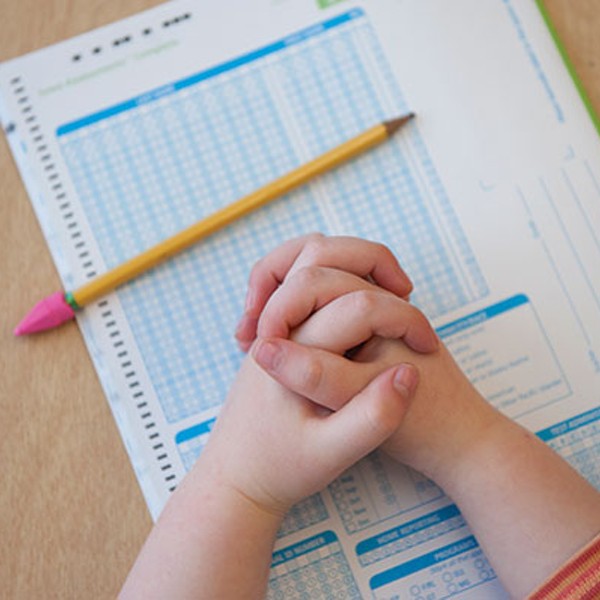It used to be that back-to-school meant writing a paper on your summer vacation. This year, students in New York public schools were very shortly elbow-deep in benchmark tests, pretests, Star tests, and more. There will be more tests in the middle of the year, still more at the end. The data thus derived will play a role in your child's education on several levels, from how her teacher spends class time to how much extra federal money her district receives, to be shared by the State Education Department with testing vendors.
How did we get here? Is it a good place to be? Some believe all the emphasis on objective data is part of a larger scheme to discredit, defund, and generally destroy public education, to replace it with a privatized system. Others say it's just not the best way for teachers and students to be spending time.
How It All Began
Standardized testing began in the 19th century and ramped up in the early 20th as the military sought ways to figure out who had leadership potential, and a grading machine invented in 1936 sped things up. Soon after, the Iowa Tests of Basic Skills were born, and standardized tests—the Iowas and the SATs—remained a fairly minor element of public education up until the dawn of the 21st century.
In 2002, the passage of No Child Left Behind (NCLB) mandated high-stakes standardized testing nationwide as a way of finding out what children knew and which schools and teachers were doing a good job. Students were suddenly assessed more than ever before. "Data-driven curricular alignment" and other such buzzwords became a big part of school board and faculty discussions.
Racing, But Where?
In 2009, the Obama administration's Department of Education unveiled Race to the Top (RTTP), which tied federal funding directly to assessments in a big way. Out of a possible 500 points a state can be awarded on its RTTT grant application, 117 are tied directly to assessment; others relating to performance are undoubtedly being measured by its results.
RTTT also ties teacher evaluations to test scores more than ever before, through the widespread use of a "value-added" modeling system that assesses teachers based on their students' test result improvements from one year to the next in an Annual Professional Performance Review.
RTTT also calls for the implementation of a new, nationwide curriculum "designed to be robust and relevant to the real world, reflecting the knowledge and skills that our young people need for success in college and careers," according to its developers.
Testing is by definition an arduous business, and a number of teachers and parents have been protesting the enormous increase in its use since the initial rollout of NCLB. According to the website Rethinking Testing, a nine-year-old New Yorker now spends 11 hours of her school year taking standardized tests, a figure that does not factor in the curriculum hours spent directly preparing for them, "teaching to the test."
"Until NCLB changed the whole ball game, tests were just something you had on occasion. They could be useful. Testing has its place, but what we see now is not that," says Nancy Schneidewind, a professor of education at SUNY New Paltz since 1975 and author of Educational Courage: Resisting the Ambush of Public Education. "What we have is an unprecedented, federally imposed set of standards, tests, and evaluations of students and teachers, taking away local control of schools.
"Common Core is just part and parcel of the same pattern, an increase in the number and significance of high stakes tests," says Schneidewind. "There's a lot of mythology out there about Common Core. When I say critical thinking, I mean raising critical questions; theirs is a much narrower view of being able to analyze data and get the 'right' answer."
Different Learners, Same Test
Defining success by test scores seems narrow indeed to parents of special needs students, English learners, and those whose learning styles otherwise vary. "My younger son has a disability," says parent Bianca Tanis, "and when I found out he had to take the same test as everyone else, it felt like a violation of his rights and dignity. I was told it was mandated—they had no choice, they could lose their jobs. I called state ed, then I called a civil rights attorney, who told me the only way would be for me to keep him home for six test days and six makeup days. He's autistic and thrives on routine. Kids are all different. Some are English-language learners, some have neurological disabilities. They say they 'accommodate.' Double-time is not an accommodation if it's a fifth grader sitting for three hours with a test he can't read."
















